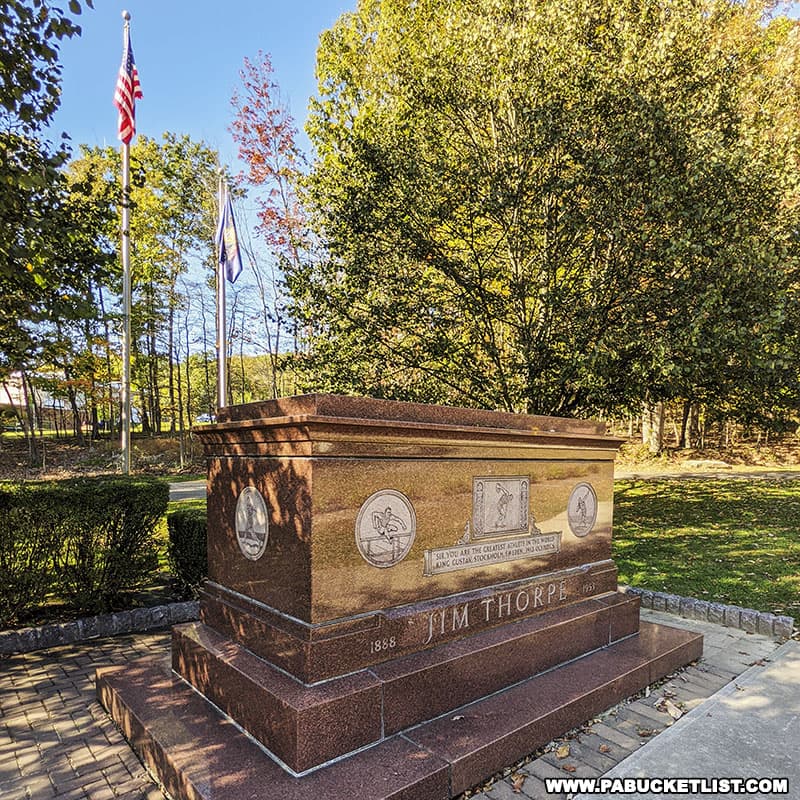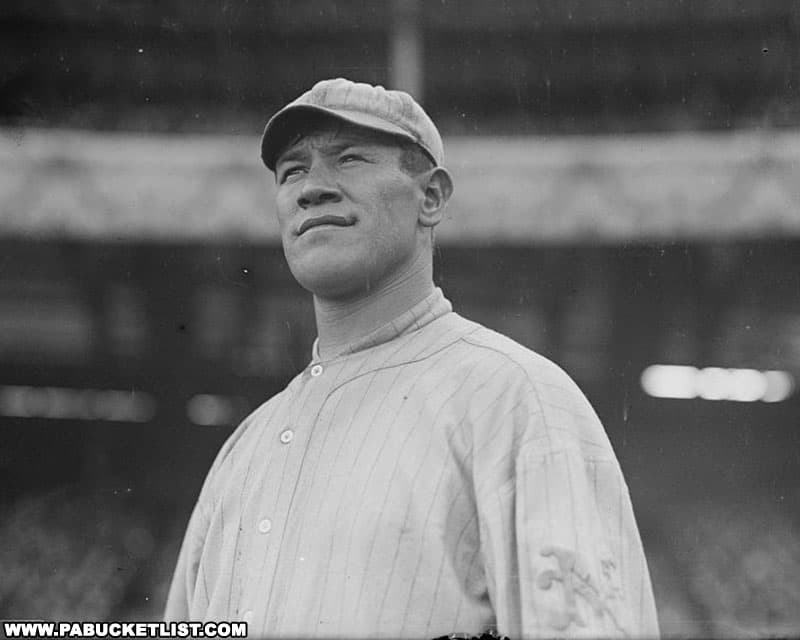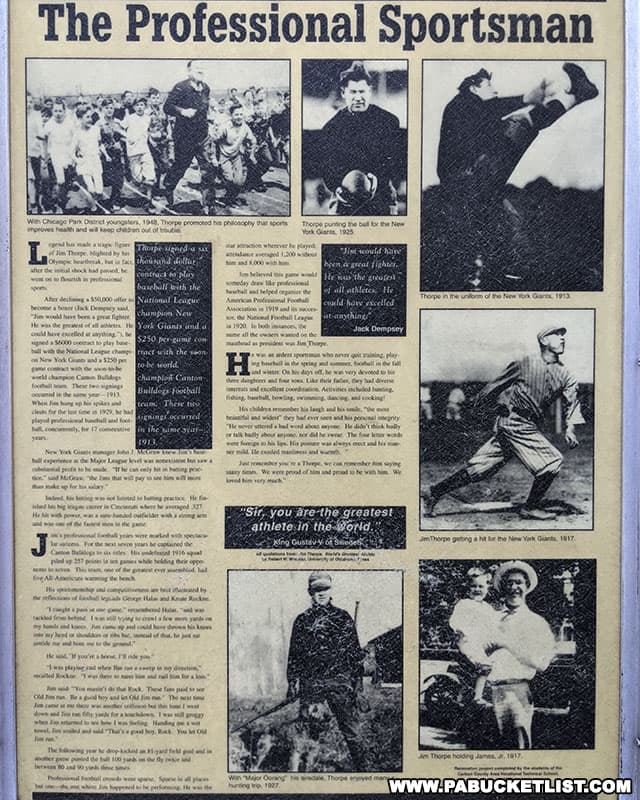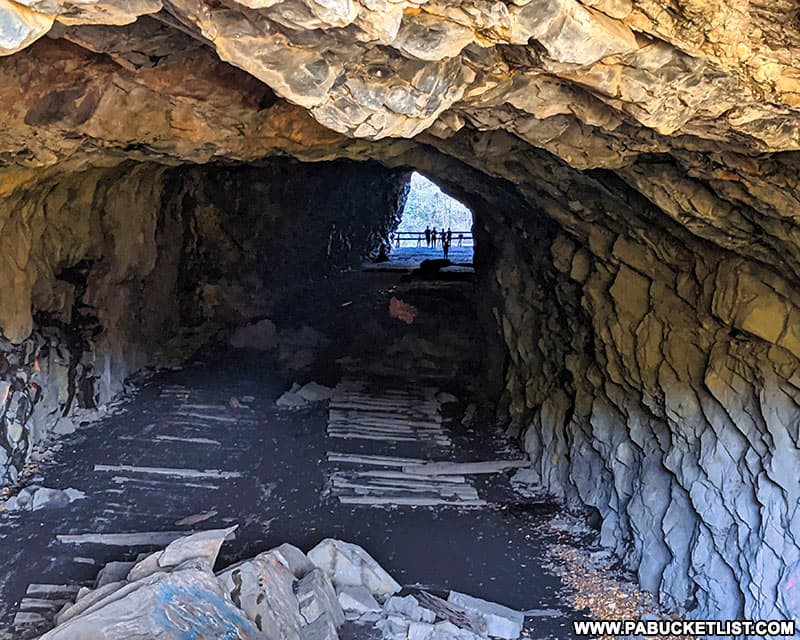
The Jim Thorpe Memorial in Carbon County is the final resting place of the man voted “The Greatest Athlete of the First Half of the 20th Century” by the Associated Press.

Jim Thorpe was the first Native American to win a gold medal for the United States in the Olympics.

Thorpe eventually became a professional football, baseball, and basketball player.

In 1920, he became the first president of the American Professional Football League, which would become the National Football League, and he is now included in the pro football, college football, U.S. Olympic, and national track and field halls of fame.

Jim Thorpe’s Early Life
Jim was Sac and Fox and Potawatomi, raised in present-day Oklahoma on the Sac and Fox Reservation, prior to Oklahoma statehood.

At age 16 he enrolled at the Carlisle Indian Industrial School in Carlisle, PA, where he became an All-American in football, playing halfback, defender, punter, and place-kicker for legendary coach Glenn “Pop” Warner.

In addition to football, he mastered nearly every sport offered at Carlisle, including basketball, lacrosse, tennis, handball, bowling, golf, swimming, hockey, boxing, gymnastics, ballroom dancing, and track and field.

Jim Thorpe the Olympian
At the 1912 Stockholm Olympics, Thorpe won both the pentathlon and the decathlon, and finished tied in fourth place for the high jump and seventh place in the long jump.

In 1913, he was controversially stripped of his gold medals after the International Olympic Committee no longer recognized him as an amateur athlete due to his time on a minor league baseball team in 1909 and 1910.

His medals were eventually reinstated in 1982; nearly three decades after his death.

The Jim Thorpe Memorial Controversy
How Jim Thorpe came to be buried in Carbon County, Pennsylvania is a somewhat controversial story, even to this day.

After Jim passed away at age 64 in 1953, his third wife, Patricia, arranged to sell his remains to two towns in eastern Pennsylvania called Mauch Chunk and East Mauch Chunk.

Thorpe’s remains were sold on the condition that the towns combine, call themselves “Jim Thorpe,” and erect a monument to Thorpe that included his remains.

The Mauch Chunk towns were searching for an economic boost, hoping the name change and memorial to the celebrated football player would help it become the home of the proposed Pro Football Hall of Fame, and lead to the construction of other tourist destinations as well.

In June 2010, two of Jim Thorpe’s sons sued the town of Jim Thorpe, in an attempt to have their father’s remains returned to his native Oklahoma.

Their case made it all the way to the U.S. Supreme Court, which in 2015 refused to hear the case, effectively bringing the matter to a close.

As of 2022, Jim Thorpe’s body remains interred in Jim Thorpe, Pennsylvania, a town he never visited while alive.

Visiting the Jim Thorpe Memorial
The Jim Thorpe Memorial is located along North Street (Rt. 903) in Jim Thorpe, PA.

If navigating by GPS, use coordinates 40.884828, -75.725668 for the parking area next to the grave site/memorial.

The grave site, a red granite mausoleum, rests on mounds of soil from Thorpe’s native Oklahoma, the New York Polo Grounds (home of the New York Giants baseball team), and from Stockholm’s Olympic stadium, where Thorpe won his gold medals in the decathlon and pentathlon in 1912.

The Thorpe Memorial also includes a sculpture, The Spirit of Thunder and Lightning, that was dedicated in 1998.

The sculpture is a tribute to Jim Thorpe’s Native American name and roots.

The memorial also features several information boards, providing facts from his life and statistics from the numerous sports in which he excelled.

Ironically, although the town’s name change and memorial did not cause Jim Thorpe, PA to become a major tourist destination, it has become that today, due to the town’s amazing architecture and proximity to many excellent natural and historic attractions.

So if you are visiting Jim Thorpe, PA to hike, bike, ride the train, or simply take in the sights, be sure to check out the memorial dedicated to the town’s namesake, one of the finest athletes the world has ever known.

Nearby Attractions
The Lehigh Gorge Scenic Railway in Jim Thorpe is consistently ranked as one of the best sightseeing trains in the northeastern United States.

The Mount Pisgah Trail in Jim Thorpe is a steep but easy-to-follow trail leading up Mount Pisgah to a pair of fantastic Carbon County vistas.

Turn Hole Tunnel is an abandoned railroad tunnel located near the Glen Onoko access to Lehigh Gorge State Park, minutes from Jim Thorpe.

Buttermilk Falls at Lehigh Gorge State Park is a cascading waterfall along the Lehigh Gorge Rail Trail, 1/4 mile north of the Rockport Access to the park and rail trail.

Tank Hollow Overlook in Carbon County offers visitors a stunning view of a bend in the Lehigh River in the western Poconos.

Exploring Hickory Run State Park is an in-depth guide to the best things to see and do at this 15,990-acre park in Carbon County, just north of Jim Thorpe.

Did you enjoy this article?
If so, be sure to like and follow PA Bucket List on Facebook, Instagram, and/or Pinterest to stay up-to-date on my latest write-ups about the best things to see and do in Pennsylvania!
Click on any of the icons below to get connected to PA Bucket List on social media.


